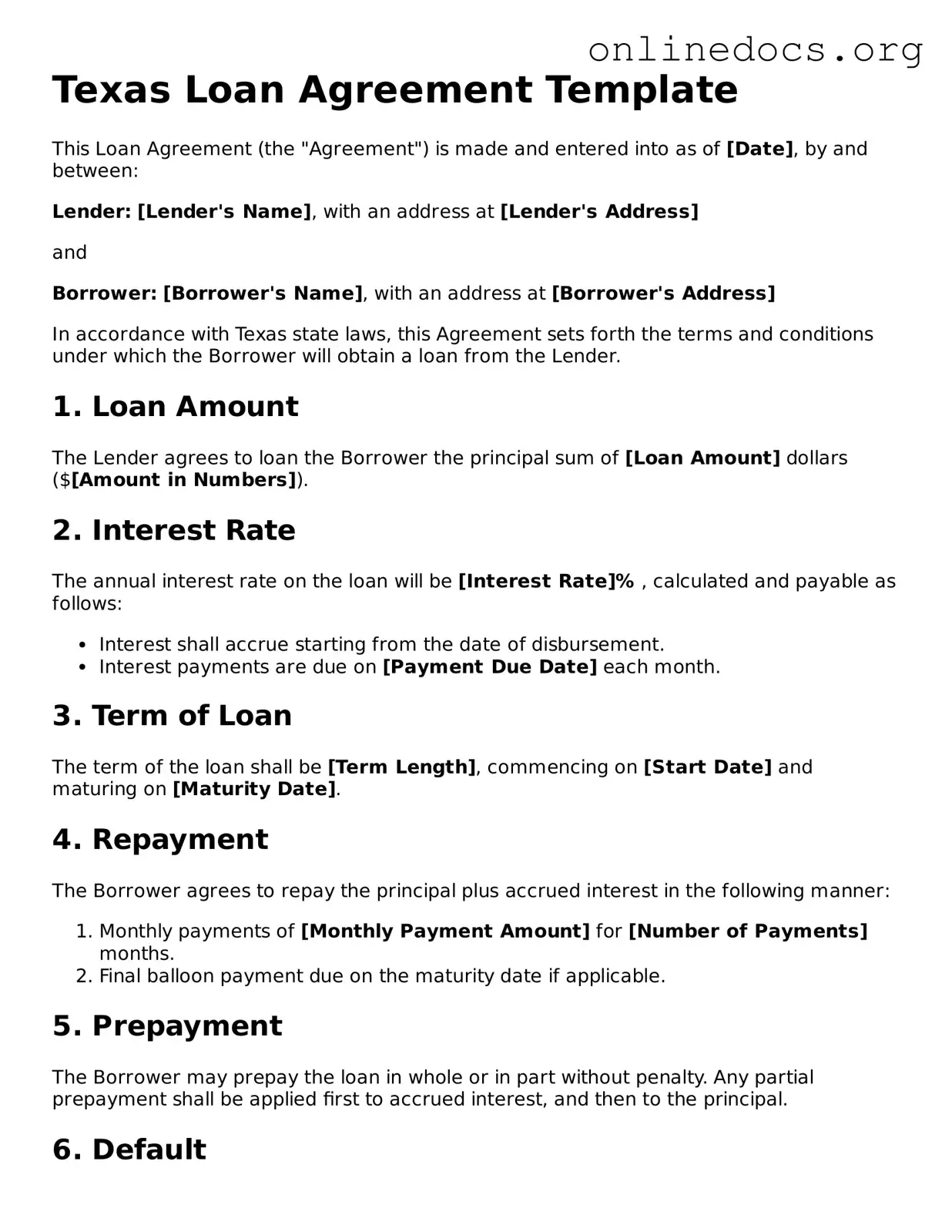The Texas Loan Agreement form shares similarities with a Promissory Note. A Promissory Note is a written promise to pay a specified amount of money to a designated party at a certain time or on demand. Like the Loan Agreement, it outlines the terms of the loan, including the principal amount, interest rate, and repayment schedule. However, while the Loan Agreement typically involves two parties—the lender and the borrower—the Promissory Note focuses primarily on the borrower's commitment to repay the loan. Both documents serve to protect the interests of the lender while ensuring the borrower understands their obligations.
Another document akin to the Texas Loan Agreement is the Security Agreement. This document is often used when a loan is secured by collateral. Similar to the Loan Agreement, it details the terms of the loan but also specifies the assets that the borrower offers as security. If the borrower defaults, the lender has the right to seize the collateral. Both documents aim to provide clarity and protection for the lender, but the Security Agreement adds an additional layer of security by outlining the collateral involved in the transaction.
When engaging in any financial transaction, it is essential to understand the implications of documents such as the Texas Loan Agreement, Mortgage Agreement, Security Agreement, and Credit Agreement. These agreements play a crucial role in defining the terms and responsibilities of the parties involved. Similarly, if you are participating in activities that could lead to unforeseen incidents, it is important to be aware of liability issues. For more information on releasing your rights and acknowledging risks, you can visit fillpdf-forms.com, where you can access the necessary forms.
The Texas Loan Agreement also resembles a Lease Agreement, particularly in situations where financing is provided for the rental of property or equipment. Both agreements establish terms regarding payment, duration, and responsibilities of the parties involved. While a Lease Agreement typically pertains to the use of an asset rather than ownership, both documents require clear terms to ensure that both parties understand their rights and obligations. Each agreement is crucial in establishing a legal framework for the financial arrangement.
Lastly, the Texas Loan Agreement is similar to a Business Loan Agreement. This type of agreement is specifically tailored for business purposes, outlining the terms under which a business borrows money. Like the Texas Loan Agreement, it includes details about interest rates, repayment terms, and any collateral involved. Both documents serve to formalize the lending process, ensuring that both the lender and borrower are on the same page regarding the expectations and responsibilities associated with the loan. Understanding these similarities can help borrowers navigate their financing options more effectively.
